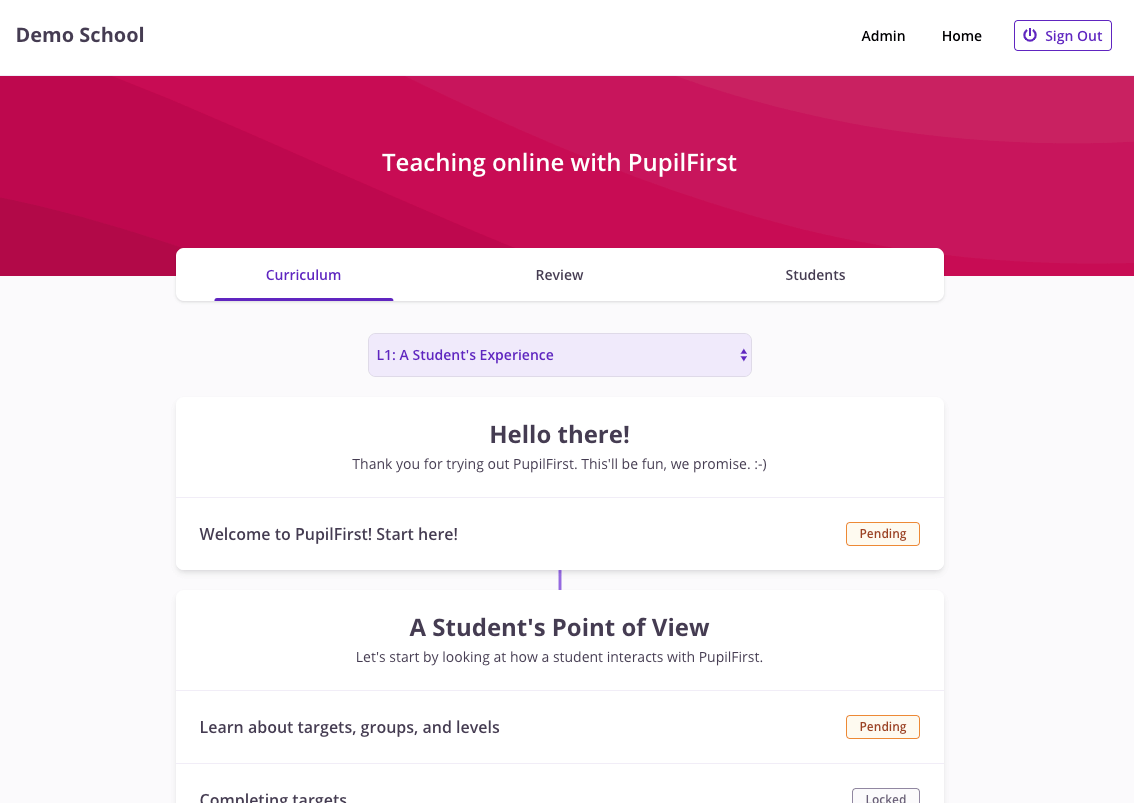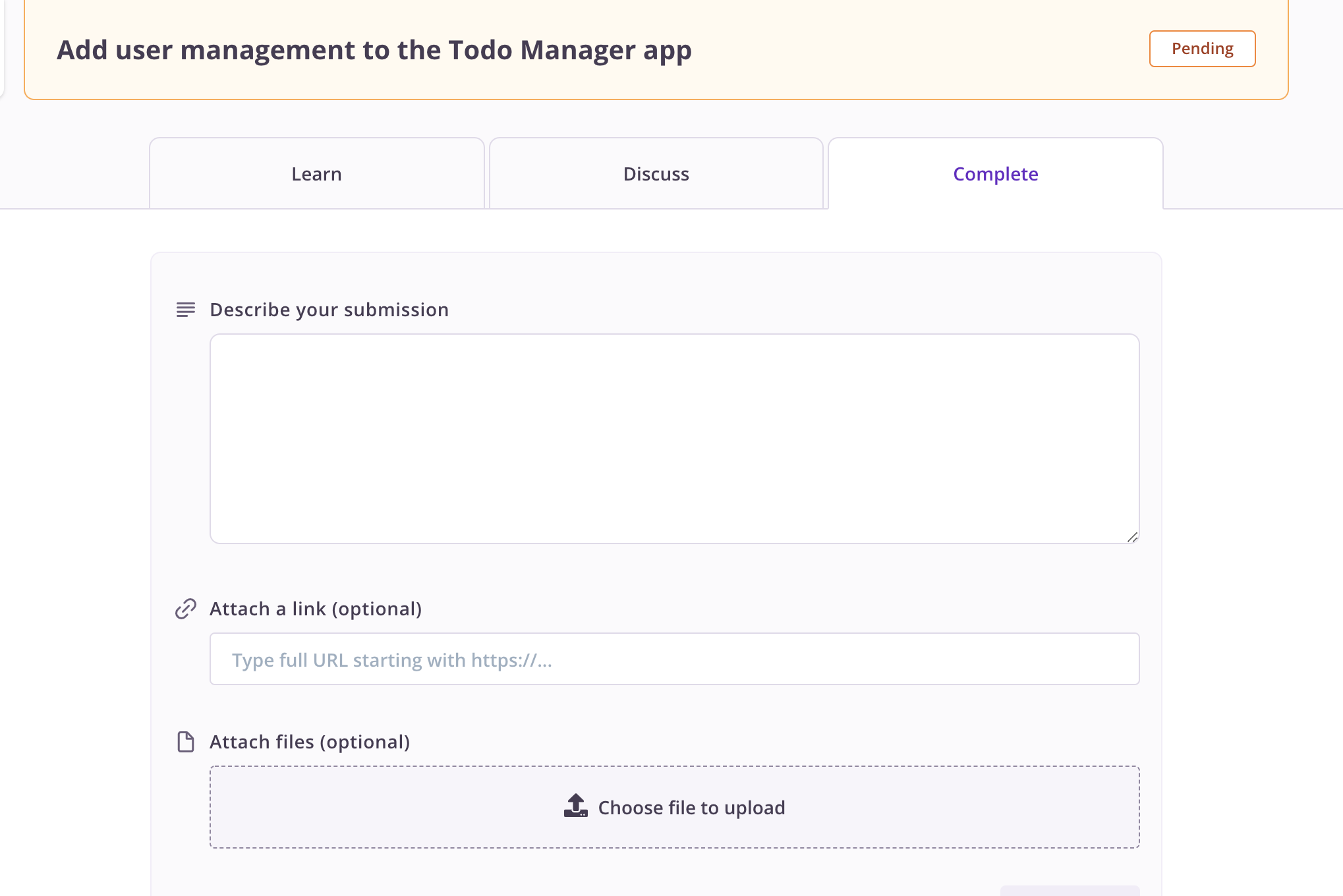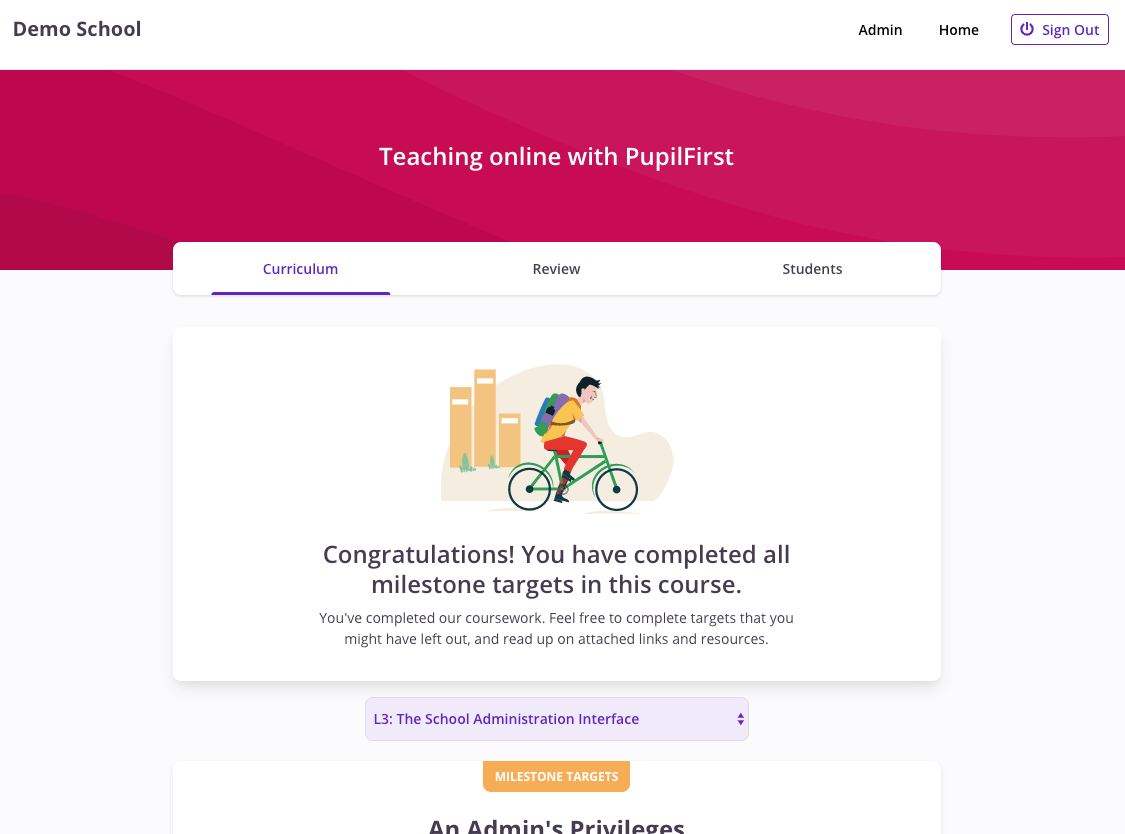Taking Courses
All students begin a course in its first level and progress through levels by completing targets. Specifically, they need to complete (or submit) all milestone targets before they're allowed to level up.

Structure of a course
While all of the content in the course is visible to a student, right from the first level, they cannot complete or submit work on targets until they've reached that level. This way, students are asked to go through the content of your course in a specific order.
Levels can contain targets that are optional, and targets can depend upon each-other in the form of prerequisites, which further allows you to customize the order in which students attempt targets. As an author, how you'll structure the content depends upon the nature of the topic that you're trying to teach.
Completing targets
Students progress in a course by completing targets, and leveling up. As discussed in the curriculum editor, where you'll be authoring courses, there are four methods of completion, of which targets that are configured to have submissions reviewed by coaches is the most interactive option. Here a student executes a series of steps, as defined using the target editor, to submit a target for review.

Reviewed targets are very likely to be the most valuable target completion method for a student. This is because it's possible for expert coaches to make a qualitative review of a student's submission and give targeted feedback that will help them the most.
This is a part of what teachers do - get to know your student, what they need, and how best to help them progress from wherever they are in their learning process. No automated system can replace this. Yes, it can be difficult at times, and it can be time-consuming, but given that the goal of teaching is to provide the best possible outcome for our students, we should use the best methods available.
We can, and will continue to build features to make the review process easier. If you have ideas about how we can make improvements, please talk to us.
Leveling Up
Students level up by completing milestone targets. There are two conditions that must be satisfied before they're allowed to level up:
Students are allowed to level up as soon as they've submitted work on all their milestone targets.
This means that students don't (always) need to wait for grading on reviewed targets. This is allowed so that students aren't held up by delays that can occur in reviewing student submissions.
If on Level 2 or higher, students must not have any failed submissions, or those pending review by a coach in the previous level.
This blocks students from leveling up continuously simply by submitting work, and that students must re-submit work on a previous level's failed milestone target, or wait for a coach to review work on the previous level. Note that the block on leveling up can only appear if your course contains targets where submissions are reviewed by coaches.
Participating in the Community
When a community is linked to one or more courses, students in those courses can post questions in the community. In addition to this, if a community has the Discuss Targets option is enabled, then students will see the Discuss tab when they open targets. The tab shows questions other students have asked about the target in the past.
Because the issues that students face are often similar, having a history of doubts raised by previous students increases the likelihood that a student can immediately get answers for their doubts. For the author of a course, these questions can also be an indicator that there are aspects of the target's content that could be improved.
Finishing a course
Students are considered to have finished a course when they've passed all milestone targets in it.

On courses with difficult subject matter, we've found it appropriate to end courses with capstone milestone targets that require students to exercise a wide range of skills they've learned during the course.
This allows students to flex their new skills, and also provides a good opportunity to provide feedback and to guide them towards further growth.